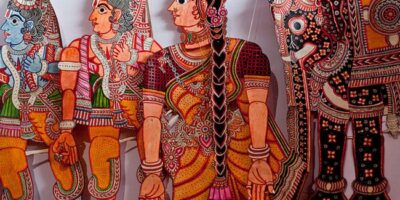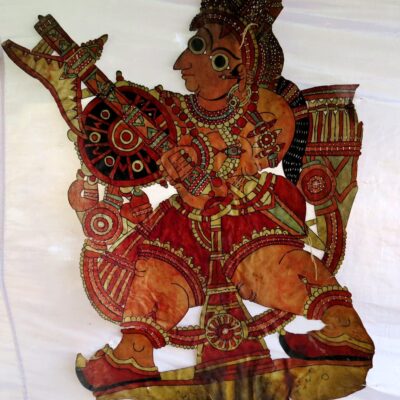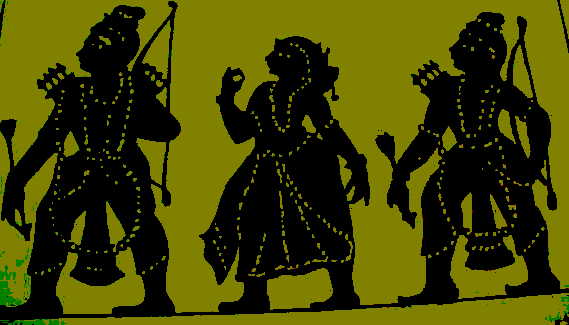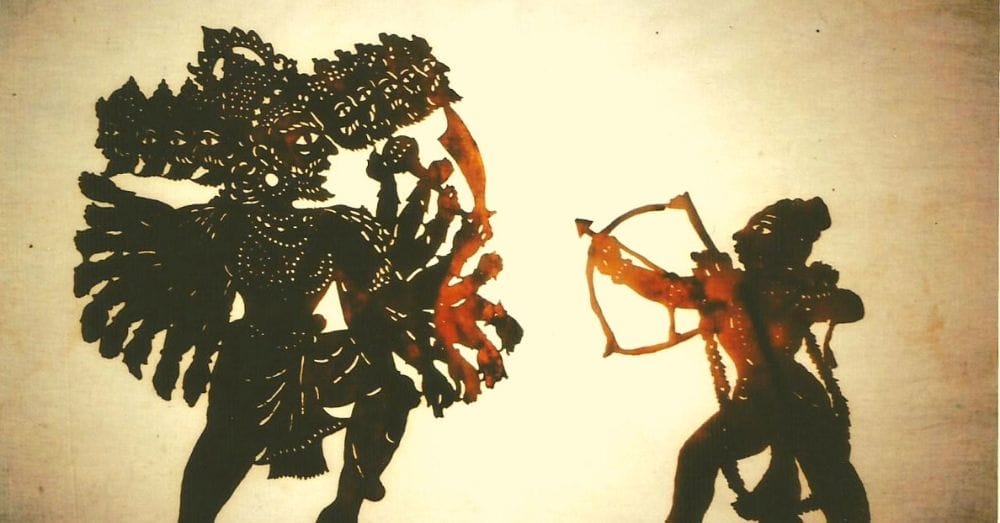Shadow Play
On my frequent travels to villages across the country, the one thing that strikes me is the influence of art and craft, nature and everything handmade in their everyday lives. From the use of the Neem stick to clean your teeth, to eating in crafted brassware, to playing hide and seek around their thatched roof homes, to women doing their daily chores in hand-woven Ikat saris. The influence of craft was so seamlessly part of them that they didn’t know any other way of life.
When I visited the leather puppet artists in Nilmalakunda, a small village in Anaanthapuram district of Andhra Pradesh, I was greeted by vibrant and colorful hide in different shapes and motifs decorating the entrance of almost every home. This craft has been handed down from generation to generation and the translucency and vivid colors, give the puppets their brilliance that they almost look like glowing jewels when viewed against light. Each layer of color gave a different shade and it was interesting to see a piece of art take shape in front of my eyes.
Allu Kullayappa and his son Khandey Kullayappa tell me about the “good old days” when they went from one village to the other on a bullock cart performing tales from the Mahabharata and Ramayana. Khandey started off as early when he was 10, making puppets and then going on to become a senior story teller on the troops travels across the country and even to France, about 7 years ago. “Till about 20 years ago, there were a lot of takers for our craft in the country and we were constantly on the move, but today our grandsons make more of lamps and other objects, very few puppets.”
The history of leather puppetry in India, dates back to the twelfth century. There are not too many written records of shadow puppets, even though India has a varied tradition of these. Historically, the tradition of Chhaya Natak (shadow theatre) seemed to have existed in Gujarat a thousand years ago and migrated to Maharashtra.
The traditional shadow puppet theater is mostly in the States of Karnataka, Andhra Pradesh, Kerala, Tamil Nadu, Maharashtra and Orissa. Even though the idea behind the puppetry shows were similar and they were based on stories from Ramayana and Mahabharata, there are interesting differences between the puppets from state to state.


Andhra Pradesh- Tolubommalattam.Life size puppets.Their entire bodies can be manipulated and are very vibrant and colourful. They mostly have one eye.


Karnataka- Thogalugobeatta. Most of these puppets have two eyes, elaborately painted and cut outs around the iris. They are multicolored and life size. There are only couple of families who make them, almost extinct.


Kerala- Tolpavakoothu. The puppets are traditionally an extension of the human body and placed on a platform for performance. The hands and legs of these puppets are immovable as they perform the Ramayana and its inauspicious for deities to move their hands and legs according to Kerala traditions. They are painted in dark colours with more cut work and punching but less detailing.


